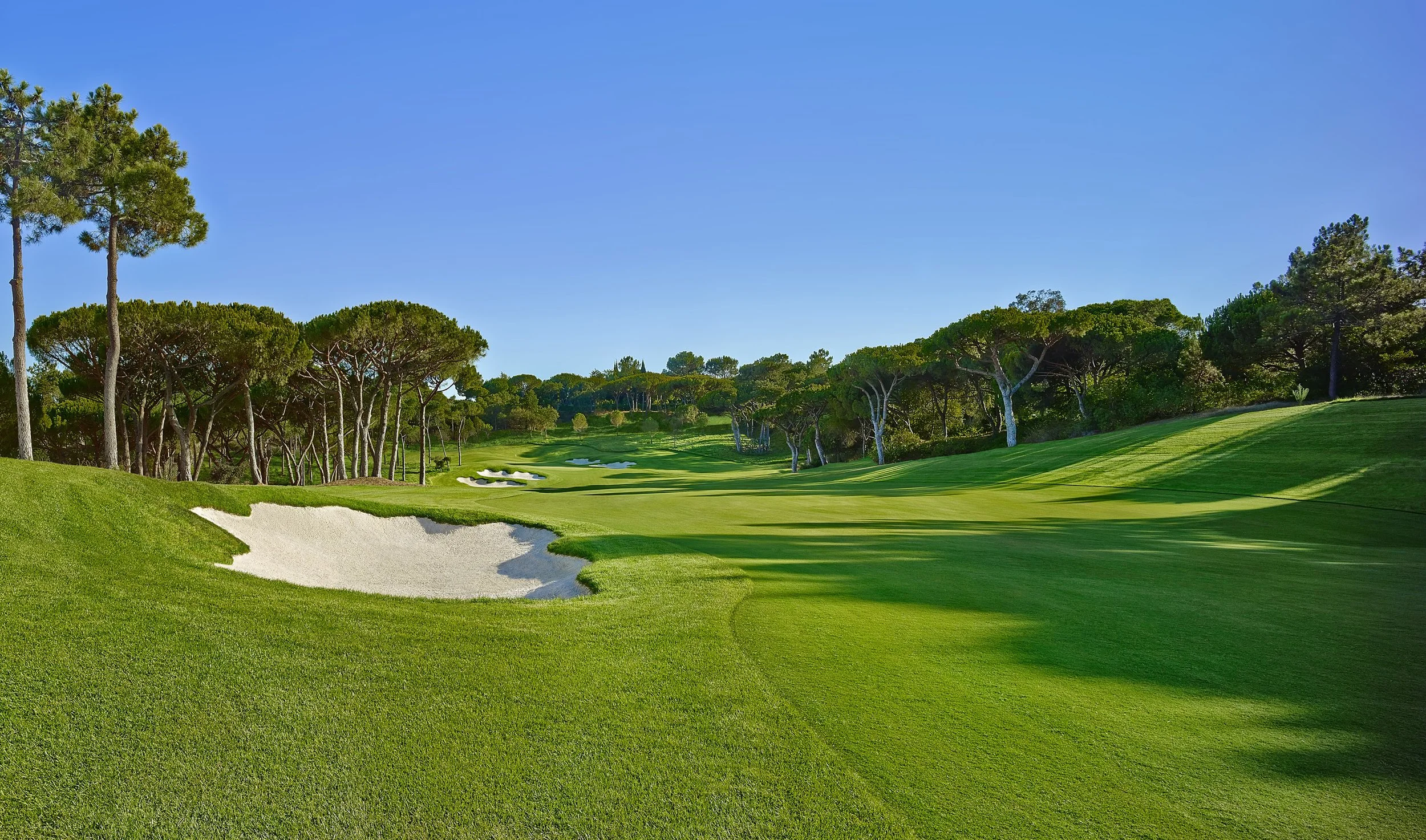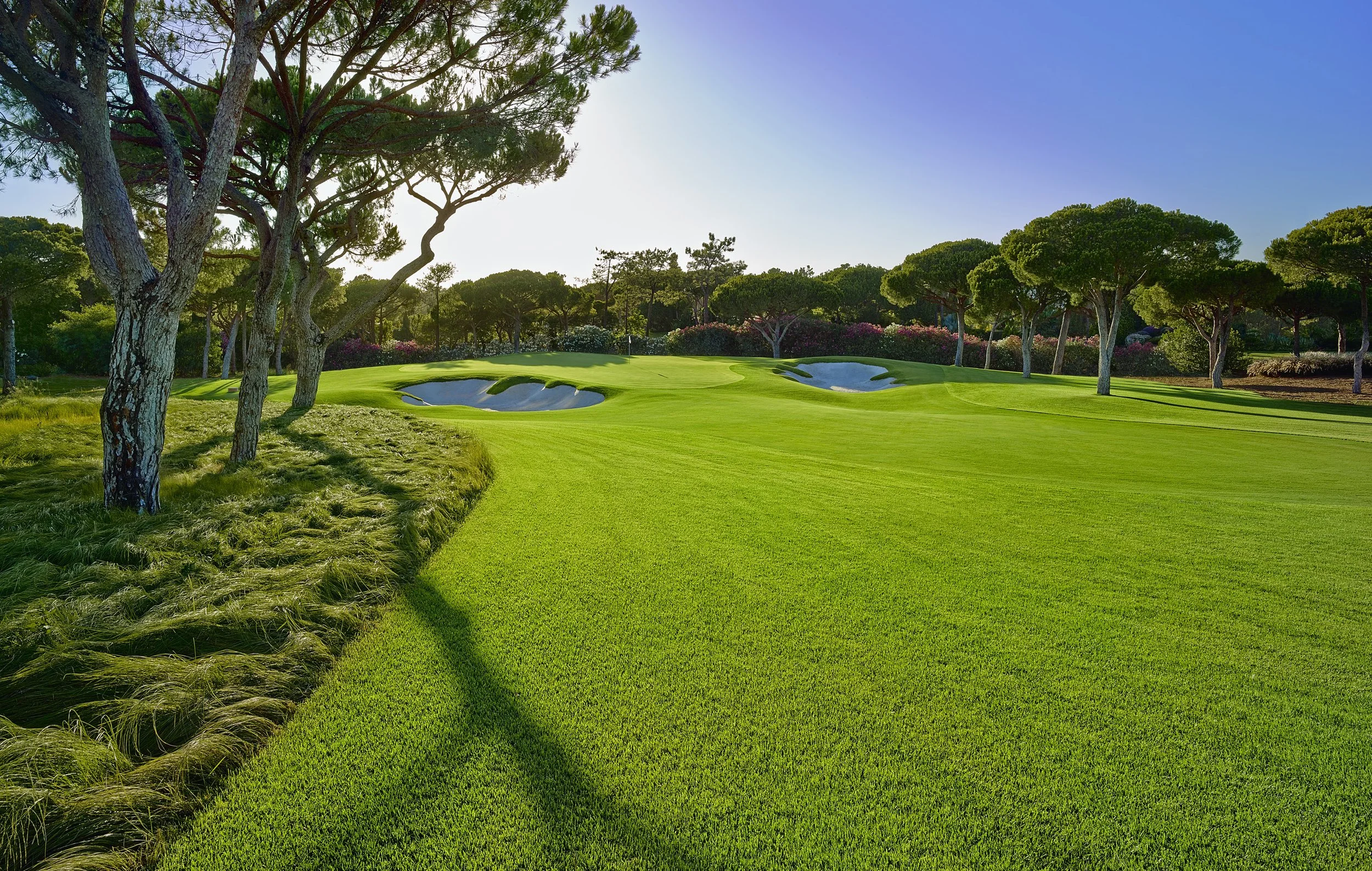
Experience: Quinta do Lago North Golf Course
The Quinta do Lago North Golf Course, situated within the exclusive Quinta do Lago estate in the Algarve, represents a benchmark for the modern, luxury, and environmentally-conscious European golf experience. While the resort boasts three world-class courses, the North Course is defined by its comprehensive 2014 rebirth, a €9 million project that transformed it from a composite layout into a sophisticated, strategically sound, and aesthetically pristine course. It stands as the physical manifestation of the resort's modern philosophy, balancing championship-level conditioning with broad playability for members and high-end resort guests.
The 2014 project was a total replacement, not a refurbishment. The resort invested €9 million to completely rebuild the course from the ground up. This massive undertaking was led by American architect Beau Welling, in close collaboration with Paul McGinley, who was the victorious European Ryder Cup captain that same year.
The engagement of McGinley, at the peak of his global golfing prominence, was a clear statement of intent. It instantly provided the North Course with a "signature" architect and a modern prestige to rival the South Course's storied tournament history. This investment and branding strategy repositioned the North Course as a co-equal flagship, justifying its premium green fees and attracting a clientele seeking the most contemporary golf experience.
The scope of the work was comprehensive. All greens, tees, bunkers, irrigation systems, drainage systems, and cart paths were reconstructed using innovative technology. This ground-up rebuild is the reason the course is consistently lauded for its immaculate, year-round conditioning.

The North Course is a quintessential "thinking golfer's course." It is not an overpowering "bomb and gouge" layout. Instead, the Welling-McGinley design places a premium on strategy, accuracy, and shot-shaping. "Precision driving is vital" to set up scoring opportunities
The Modern Approach to Playability
The course presents an interesting and intentional duality: it is simultaneously strategic and challenging , yet also highly accommodating and "encouraging all levels of play". This is not a contradiction; it is a deliberate, modern design philosophy that separates the tee-shot challenge from the short-game challenge.
The strategic challenge lies in navigating the doglegs and avoiding the well-positioned, rebuilt bunkers. Good players are challenged to hit specific landing areas to gain an advantage.
The accommodation, however, is found around the greens. A key feature of the €9 million redesign was the introduction of "low-cut Bermuda grass approaches". This design eliminates the penal, thick rough that typically surrounds the greens of older courses. By providing these tightly-mown run-off areas, the design "create[s] recovery shot options". A player who misses the green is not automatically punished with a difficult hack-out. They can often use a putter, a hybrid, or a straightforward chip from a perfect lie. This feature makes the course more enjoyable for higher-handicap resort guests, improves the pace of play, and aligns with the resort's goal of being accessible.
Hazard Assessment
The course's defenses are varied and thoughtfully integrated:
Greens: The rebuilt greens, surfaced with Penn Bent Grass , are a primary defense. They are described as "undulating" , "tricky" , and, thanks to their modern construction, "pure and quick".
Bunkers: All bunkers were rebuilt and are "strategically placed" to guard landing zones and greens, penalizing poorly-placed shots.
Water: Water hazards are a significant and aesthetically pleasing feature. They come into play on several holes, most notably 13 and 18, where the lakes "have claimed many unhappy victims".
Wind: The par-3 holes, in particular, are "well influenced by the wind" , requiring careful club selection.
Signature Hole Breakdown: The Definitive Guide
The strategic character of the Quinta do Lago north Course is best understood by analyzing its most memorable and challenging holes.
Hole 4 (Par 4): "The Badge of Honour"
This hole is identified early in the round as one of the course's most difficult. It is a prime example of the course's demand for shot-shaping. The hole "demands a right-to-left drive" (a draw) to find the optimal position , confirming the course's overall tendency. A successful tee shot leaves a "tricky second shot" into a "tiny green with unforgiving run off areas". Mastering this hole is considered a "badge of honour" and an early test of the precision required for a low score.
Hole 12 (Par 4): "The Picturesque Dogleg"
A memorable hole, the 12th is a "picturesque dogleg" left, framed by mature pine trees. This hole perfectly encapsulates the course's risk-reward ethos. The player "has a choice off the tee". The "dangerous" play is to hit a driver "tight to the left" , attempting to cut the corner over the lake to leave a short approach. The "safe" play is to aim right of the hazard, but this line must be precise enough to avoid the fairway bunker located at approximately 215 meters from the tee. The hole is completed by a "rollercoaster green," demanding a deft touch on the putting surface.
Hole 14 (Par 3): "The Outstanding Challenge"
Described as an "outstanding" par-3 , this "short but tricky" hole encapsulates the beauty and challenge of Quinta do Lago. The tee shot is played downhill to a large green that lies slightly below the tee box, surrounded by mature umbrella pines. While the green is a large target, it is well-protected by bunkers short and left. The true defense is the green itself: it is multi-tiered and, like all the greens, "pure and quick". Finding the green is not enough; the player must find the "correct portion" of the putting surface to avoid a treacherous, long-distance putt.
Hole 18 (Par 5): "The Final Watery Test"
The North Course concludes with a strong, strategic par-5. (Note: Some sources incorrectly list this as a par-4 ). Water is in play and serves as the primary hazard, having "claimed many unhappy victims". Bunkers are strategically placed to guard the landing zone , demanding a confident and accurate tee shot. This finishing hole requires three (or two exceptional) precise shots to navigate the water and bunkers, providing a dramatic and fitting conclusion to the round.
The World-Class Infrastructure: The"Quinta do lago north Course Ecosystem"
A round on the Quinta do Lago north Course is the centerpiece of a comprehensive "game improvement" ecosystem. The resort has created a symbiotic loop between the course, its elite academy, and a state-of-the-art fitting center, all co-located.
The North and South Clubhouses, which share a location, were recently renovated to be "brighter, more spacious, and welcoming". This facility serves as the central "hub for golfers" and is renowned for its "legendary '19th Hole' atmosphere". It features a fully-stocked Pro-Shop and a full-service restaurant and bar offering all-day menus.
The practice facilities at the North Course are extensive. The driving range, open daily from 7:00 to 17:00 , is a 35,000-square-meter area with 40 mat-based bays. More importantly, the resort features a state-of-the-art short game area, also designed by Beau Welling and Paul McGinley. This area includes a large chipping green, a separate putting green, and a dedicated pitching area to allow for focused practice.
Quinta do Lago is home to the first Paul McGinley Golf Academy in Europe, founded in 2011. The academy operates on McGinley's philosophy that "everyone is unique," focusing on tailoring instruction to individual needs rather than imposing a single method. It offers a range of programs, from private lessons and multi-day golf schools to on-course playing lessons. The academy is also integrated with the resort's wider sports hub, "The Campus," to offer specialized "Golf Fitness" programs.
Located at the North Course driving range , the TaylorMade Performance Centre is a critical component of the resort's offering. It is the only facility of its kind in Portugal and one of the most advanced in Europe. This center offers tour-level custom fitting using the industry's most advanced technology, including Trackman and FlightScope launch monitors for full-swing analysis and the SAM PuttLab for putting analysis.
This integration creates a seamless, premium, and highly marketable "game improvement" package. A visitor can get a tour-level fitting at the TaylorMade Centre, take a lesson from a PGA pro at the McGinley Academy, and then immediately test their new equipment and skills on the very course co-designed by Paul McGinley

